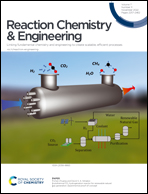A scalable twin surface dielectric barrier discharge system for pollution remediation at high gas flow rates
Abstract
In this work, a modular, multi-electrode surface dielectric barrier discharge system for the decomposition of polluted air streams at high volumetric flows, necessary for industrial applications, is designed and constructed. The system is demonstrated for the decomposition of butoxyethanol and n-butane in ambient air flows of up to almost 500 slm (standard litres per minute) (≙ 30 m3 h−1) at concentrations between 50 ppm and 1000 ppm. With an energy density of (78.3 ± 3.6) J L−1 a maximum relative conversion of about 27% of butoxyethanol is achieved. n-Butane was used to enable comparison with previous studies. Here it could be demonstrated that the scaled-up source achieved higher conversion at lower energy densities in comparison to the original design used at lower volumetric flow rates. Additionally, the density of ozone, which is a toxic by-product of the overall process, was measured in the exhaust gas under different operating conditions and its degradation with activated carbon filters was studied. At an energy density of 79.6 J L−1 a maximum ozone molecule flow of (9.02 ± 0.19) × 1018 s−1 was measured which decreases with increasing energy density, because among other possible effects the rising temperature accelerates its decay. One of the activated carbon filters was able to reduce the concentration of toxic ozone by 100% under conditions where a preheated airstream is used.



 Please wait while we load your content...
Please wait while we load your content...